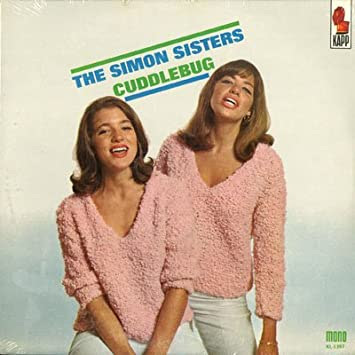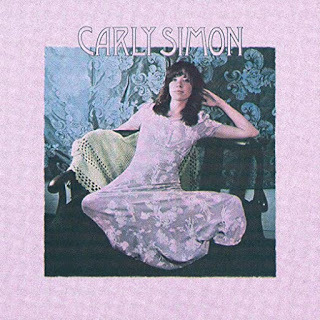R.J. Stowell's Blog: rjsomeone, page 11
February 6, 2021
The Yes Album
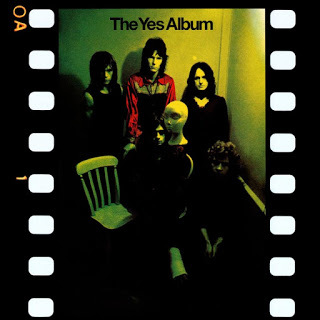 Yes' incredible trilogy (The Yes Album, Fragile and Close to the Edge), almost didn't happen. Atlantic, following the dismal sales of the 2nd Yes LP, nearly dropped the band from the label. (How many of you, be honest now, have ever really heard the first two Yes LPs?) Were it not for the Yesterdays compilation, the incredible cover of Simon and Garfunkel's "America" would be obscure, even to this writer who, in his teens followed Yes around like the Grateful Dead. The first phase of Yes, the Peter Banks' Yes, was essentially a psychedelic band, a decent one, but by 1971, no one cared (in the same way that no one cared about Tull's English folk). The band was somehow able to respond to this unknown threat with the addition of Steve Howe and Jon Anderson's switching up his focus and taking the writing reigns like a boss.
Yes' incredible trilogy (The Yes Album, Fragile and Close to the Edge), almost didn't happen. Atlantic, following the dismal sales of the 2nd Yes LP, nearly dropped the band from the label. (How many of you, be honest now, have ever really heard the first two Yes LPs?) Were it not for the Yesterdays compilation, the incredible cover of Simon and Garfunkel's "America" would be obscure, even to this writer who, in his teens followed Yes around like the Grateful Dead. The first phase of Yes, the Peter Banks' Yes, was essentially a psychedelic band, a decent one, but by 1971, no one cared (in the same way that no one cared about Tull's English folk). The band was somehow able to respond to this unknown threat with the addition of Steve Howe and Jon Anderson's switching up his focus and taking the writing reigns like a boss. Howe joined an already immensely talented band, whose members each had distinctive styles, but things certainly change when the new guitarist's skillset is like nothing anyone ever heard before. Progressive rock gave us many incredible guitarists who studied musicians ranging from Wes Montgomery to Andrés Segovia, but Howe listened to Chet Atkins and the flatpickers and banjo players of American Appalachian music, adding the pedal steel guitar to his growing arsenal of instruments. That kind of innovation and leadership tied with Anderson's fanciful tunes was the catalyst as well for Chris Squire's ascent as one of rock's premiere bassists; arguably the musician who took the bass from out of the percussion section to have it vie for the lead.
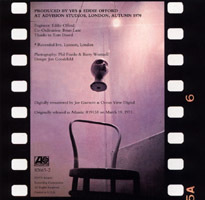 The distinction of diverse sounds seems the key to the lineup, and one can't talk about the other band members with acknowledging an element that would not evolve later in the classic years of Yes, that of Tony Kaye's Hammond organ. Wakeman the following year would thoroughly embrace the Moog and a bevy of synthesizers, but the Hammond is integral to The Yes Album (so prevalent in "Starship Trooper).
The distinction of diverse sounds seems the key to the lineup, and one can't talk about the other band members with acknowledging an element that would not evolve later in the classic years of Yes, that of Tony Kaye's Hammond organ. Wakeman the following year would thoroughly embrace the Moog and a bevy of synthesizers, but the Hammond is integral to The Yes Album (so prevalent in "Starship Trooper). The Yes Album's, structures, even its complexities, are uncluttered and clear, despite a virtuosity of each band member that might otherwise be a sloppy stew, and while Eddie Offord's production helps here, the LP is syncopated by Bill Bruford's stunning jazz sensibility. Unlike Keith Moon who filled every available space with his patter, Bruford let the music breathe, to come up for air. He would leave the band for the far more eccentric King Crimson the following year, replaced by Alan White for the most classic Yes line up, but Bruford's subtle contributions are essential to The Yes Album sound.
 After the relative tedium of their second album, Time And A Word, Yes had arrived, luckily dodging the corporate bullet. With the addition of Steve Howe, Chris Squire had the perfect foil for his bass leads and the songs were all the better for it. "Yours Is No Disgrace" is ten minutes of innovative time changes and "Starship Trooper" rocks harder than 95% of the prog-rock that isn't Crimson, and didn't "The Clap" make you want a guitar?
After the relative tedium of their second album, Time And A Word, Yes had arrived, luckily dodging the corporate bullet. With the addition of Steve Howe, Chris Squire had the perfect foil for his bass leads and the songs were all the better for it. "Yours Is No Disgrace" is ten minutes of innovative time changes and "Starship Trooper" rocks harder than 95% of the prog-rock that isn't Crimson, and didn't "The Clap" make you want a guitar? The Yes Album is an AM8.
Note: Interestingly "The Clap" is actually just called "Clap," though Jon Anderson's misstep introduction has forever retitled the tune.
February 4, 2021
Joni and Zappa?
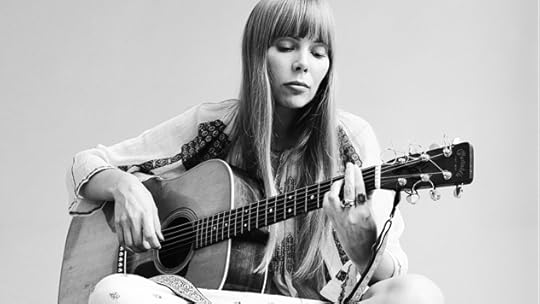
The posts from AM form a continuum, the Zen of things. I'm on a Laurel Canyon kick of late, but usually about the Americana bloc and not the bluesy underbelly of the same scene. The posts often imply that the Joni/James side of the spectrum never crossed paths with the Jim/Frank contingent, which simply wasn't the case. To me, you'd be hard-pressed to find any camaraderie between the realism that is Joni Mitchell and the surrealism of Zappa – but what do I know?Case in point: November 13, 1970, the Fillmore East, NYC. Joni Mitchell left for Crete in the early months of 1970. There she broke up with Graham Nash in a way akin to breaking up in a text message. She’d spend the remainder of her trip pining over the "Our House" days, writing songs about Graham like "My Old Man," and meeting people like Carey who she would immortalize in song. Out of those days, of course, came Blue. Returning to the states, Joni was dating Jim "Motorhead" Sherwood, saxophonist and singer for The Mothers of Invention. Joni would attend the Mothers’ gig at the Fillmore and, with coaxing, found her way to the stage. Said Sherwood, "Joni sat in with us during the second show and we improvised a thing that was really good - ending it with her singing 'Duke of Earl.' She came on stage, we did a few chords for her and she started reciting this poem: 'Penelope Wants to Fuck the Sea..." (Penelope was the wife of Odysseus – so yeah, Joni's genius.)
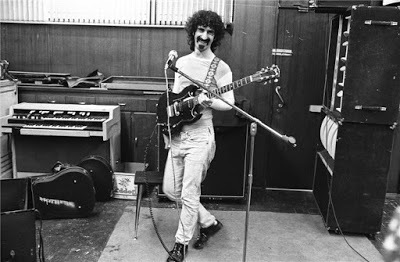 Mark Volman of The Turtles (Flo from The Mothers of Invention) said, "'Penelope Wants to Fuck the Sea' was introduced by Joni Mitchell as a poem she had written that she could never perform, live or otherwise. Joni was basically a real funny person. I had lived up the hill from her on Lookout Mountain and knew her from our singer-songwriter nights in Laurel Canyon. Her image was huge and her fans relied on her to maintain her status as the "earth mother to the stars." Frank always got a kick out of stars joining us and sinking down to our level. Grace Slick came up on stage one night and humped everyone on stage, albeit with her clothes on, as a gesture of her freedom to be weird. When Joni recited the poem, Frank directed the band through a series of noises and musical sounds that followed the poem to its climax. Joni had this huge smile on her face when she finished as though she had really broke some rules and Frank really laughed. I mean with a huge big ol' grin he laughed out loud. Frank was someone you loved to perform for."Zappa said, "…And we did a few chords for her and she started reciting this poem which began 'Penelope wants to fuck the sea…' And the audience did a double-take, 'Yuuunk!...' and a hush falls over the Fillmore… 'Joni Mitchell?'"Cool beans, huh? The moral of the story is, the twain shall meet.
Mark Volman of The Turtles (Flo from The Mothers of Invention) said, "'Penelope Wants to Fuck the Sea' was introduced by Joni Mitchell as a poem she had written that she could never perform, live or otherwise. Joni was basically a real funny person. I had lived up the hill from her on Lookout Mountain and knew her from our singer-songwriter nights in Laurel Canyon. Her image was huge and her fans relied on her to maintain her status as the "earth mother to the stars." Frank always got a kick out of stars joining us and sinking down to our level. Grace Slick came up on stage one night and humped everyone on stage, albeit with her clothes on, as a gesture of her freedom to be weird. When Joni recited the poem, Frank directed the band through a series of noises and musical sounds that followed the poem to its climax. Joni had this huge smile on her face when she finished as though she had really broke some rules and Frank really laughed. I mean with a huge big ol' grin he laughed out loud. Frank was someone you loved to perform for."Zappa said, "…And we did a few chords for her and she started reciting this poem which began 'Penelope wants to fuck the sea…' And the audience did a double-take, 'Yuuunk!...' and a hush falls over the Fillmore… 'Joni Mitchell?'"Cool beans, huh? The moral of the story is, the twain shall meet.
February 3, 2021
Bill's Signs
 BillIn 1966 my father closed his sign shop at the corner of Saticoy and Woodman Avenue in the San Fernando Valley, just across from the Gas Giant. The shop, Bill's Signs, was only moderately successful, and he had been offered a position as the principal artist for Foster and Kleiser, a company that owned and maintained billboards. At the time, billboards were akin to wallpaper for the most part, but not on the Sunset Strip. There they were hand-painted and in-your-face and would become as iconic driving down the Strip as the Chateau Marmont or the statue of Rocky and Bullwinkle. My father's first billboard was The Doors, and over a 14 year span, he was responsible for Joni Mitchell’s Blue, Captain Fantastic and the Brown Dirt Cowboy, Crosby, Stills, Nash and Young’s So Far and dozens of others. I didn’t see my father much growing up, but if I ever needed him, I knew where to go; I'd just cruise down Sunset, and although I wasn't allowed, once I found him I'd climb the ladder to the platform and we'd sit, our feet dangling over the edge, and talk as we gazed at the city in the smog.
BillIn 1966 my father closed his sign shop at the corner of Saticoy and Woodman Avenue in the San Fernando Valley, just across from the Gas Giant. The shop, Bill's Signs, was only moderately successful, and he had been offered a position as the principal artist for Foster and Kleiser, a company that owned and maintained billboards. At the time, billboards were akin to wallpaper for the most part, but not on the Sunset Strip. There they were hand-painted and in-your-face and would become as iconic driving down the Strip as the Chateau Marmont or the statue of Rocky and Bullwinkle. My father's first billboard was The Doors, and over a 14 year span, he was responsible for Joni Mitchell’s Blue, Captain Fantastic and the Brown Dirt Cowboy, Crosby, Stills, Nash and Young’s So Far and dozens of others. I didn’t see my father much growing up, but if I ever needed him, I knew where to go; I'd just cruise down Sunset, and although I wasn't allowed, once I found him I'd climb the ladder to the platform and we'd sit, our feet dangling over the edge, and talk as we gazed at the city in the smog. Jim Morrison looked out over a changing Hollywood and wrote "L.A. Woman;" a song about change and loss. The billboards along Sunset today are primarily for Calvin Klein or BMW; a statement itself in how the Strip has evolved. There has always been speculation who the L.A. Woman might be, with Pamela Courson the obvious choice; in reality the L.A. Woman was Los Angeles: "Never saw a woman so alone..."
Jim Morrison looked out over a changing Hollywood and wrote "L.A. Woman;" a song about change and loss. The billboards along Sunset today are primarily for Calvin Klein or BMW; a statement itself in how the Strip has evolved. There has always been speculation who the L.A. Woman might be, with Pamela Courson the obvious choice; in reality the L.A. Woman was Los Angeles: "Never saw a woman so alone..."Jac Holzman of Elektra Records was the first to venture into this advertising medium. For $1,200 a month, he reserved a sign near the Chateau Marmont hotel , and inaugurated it with the Doors, who were the "house band" at the Whisky A-Go-Go just down the street. Holzman reasoned that L.A. disc jockeys would see the sign on their way to work, saying the billboard was "a calling card for the artist, but it was a very large calling card."
Below is a collection of Sunset Billboards, some from Robert Landau's fabulous coffee table book, Rock 'n' Roll Billboards of the Sunset Strip (available through Amazon). I do not own the rights to these photos, only the rights to my father. And, of course, you can read so much more in Jay and the Americans. Click on the links in the sidebar, please!
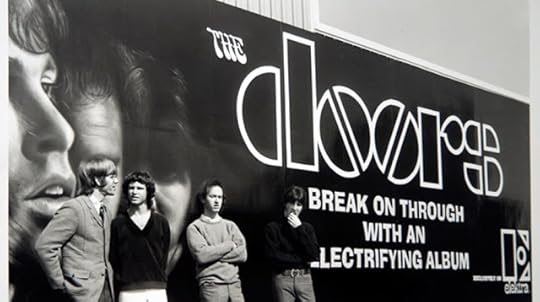
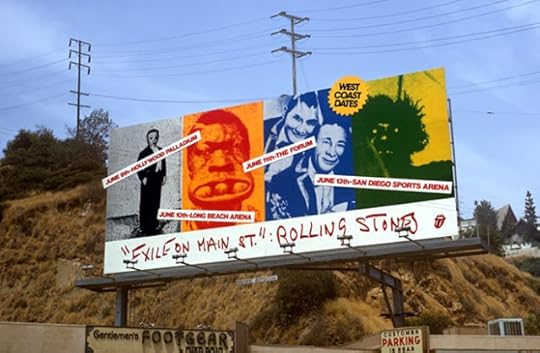
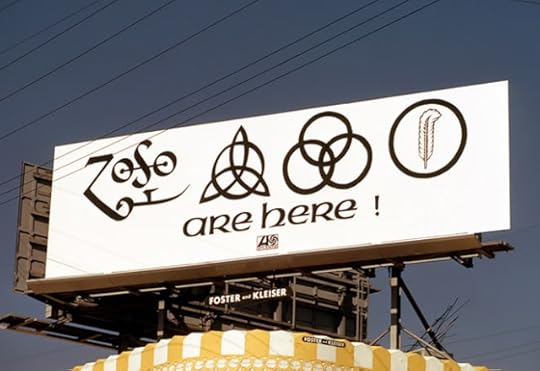



"That is the ugliest thing I've ever seen in my life," Springsteen said when he saw the billboard for Darkness on the Edge of Town (not my father's - wrong company). The Boss proceeded to "enhance" it with graffiti. Springsteen, Clarence Clemons, bassist Garry Tallent, and some crew members arrived late at night with twenty cans of black spray paint. Springsteen wrote "E Street" himself while standing on Clemons' shoulders. "I wanted to get to my face, and paint on a mustache," he said. "But it was just too damn high.
The Other Side of the Canyon
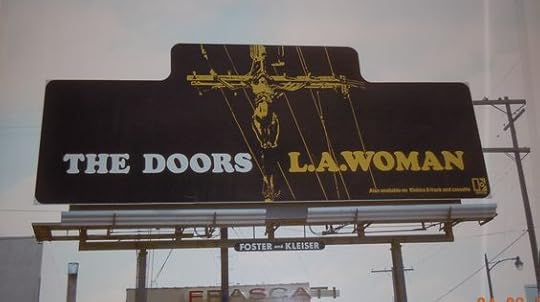
AM has extensively covered the folky side of Laurel Canyon. In early 1971, one incredible LC LP was dropped after another, a trail of music history that includes Joni and James and Carole and Stephen and and… (we’ll get to all that). Driving through today, the Canyon around the Country Store still has that Americana feel; one is hard-pressed not to sing: “Young girls are coming to the Canyon…” And yet, Laurel Canyon was equally less pastoral over on “Love Street” or at the Cabin; LC was the avant-garde muse of The Doors and Zappa, Captain Beefheart and Alice Cooper.
As 1971 was gearing up for Tapestry, Blue and Mud Slide Slim, The Doors were down on Santa Monica Blvd. having a burger and a beer and playing pool at Barney’s Beanery; spending as much time there as in the studio recording L.A. Woman.
After Revolver, the Beatles' hiatus lasted an unheard-of 13 months. Word on the street was that the Beatles were done, that they’d lost it. Then in May 1967 came Sgt. Pepper.
That same negativity pervaded The Doors in early ’71, The Soft Parade was “disappointing,” its sales were lackluster (despite a No. 1 hit in “Touch Me” – or because of its commercialism), and that lack of interest diffused the far superior Morrison Hotel. With Jim’s antics added into the mix, no one knew that The Doors would find their path in what many consider the band's finest LP.
The Doors’ Workshop at 8512 Santa Monica Blvd. provided a makeshift recording studio without the studio price; not to mention that Elektra didn’t want them wrecking the studio, particularly based on the less than impressive sales of the last two studio LPs. A mixing console was installed upstairs with studio monitors, microphones, and keyboards on the first level. Morrison recorded his vocals in a bathroom doorway to emulate an isolated vocal booth.
To toughen up the LP’s timbre, the band added bassist Jerry Scheff (who recorded and toured with Elvis) and Mark Benno, the hot rhythm guitarist from Leon Russell’s band. And what a difference it made on rockers like the title track and “Love Her Madly.” It took just two months from the LP's inception to its completion in January (the album was released in April 1971).
Here’s how important Scheff and Benno were to the band: “L.A. Woman” was initially a slow, bluesy thing from Jim and Robby Kreiger. It was in the studio that The Doors’ classic came to life, kicked in the ass by Scheff and Benno. Ray Manzarek said, “We smoked a joint and just locked in. God, did we capture it.” And it was Scheff who solidified “Riders on the Storm” with his essential yet subdued bass line. Amazingly, the recording was finished in six days with little in the way of retakes and overdubs. The album was essentially recorded live in the studio.
Sadly, Morrison left L.A. for Paris during the mixing of the LP. What was supposed to be a temporary leave of absence was a final farewell. On July 3, 1971, less than six weeks after the album’s release, Morrison died, bringing one of rock's most tumultuous careers to a bitter conclusion.
February 1, 2021
Carly Simon
It's funny, being on the fringe is like two degrees of separation, rather than six. I saw Carly once again after he died, and we talked fondly of the different Ricks we knew. It's 25 years now since Rick died, and 50 years since Carly released her debut. I don't mind being on the fringe when I'm allowed to live vicariously through people as diverse as Carly and Rick.
Carly Simon's career began with her sister Lucy as The Simon Sisters. They had a minor hit in "Winkin', Blinkin' and Nod," in 1964. The sisters' sophomore album, Cuddlebug, followed later that year. In 1969, Carly collaborated briefly with eclectic New York rockers Elephant's Memory and appeared in the 1971 Miloš Forman film Taking Off. Carly's "Long Term Physical Effects" was included in the film's soundtrack.Carly was signed by Jac Holzman to Elektra Records in 1970. She released her self-titled debut album in March 1971. The album contained her breakthrough hit "That's the Way I've Always Heard It Should Be," a somber affair like the dark underbelly of a Brian Wilson song, brooding and sad. Of it, jazz guitarist Pat Metheny said, "To me, there were always several interesting things about this piece, not the least of which is the way that she moves from root minor key to the major key just a half step above it so effortlessly in a way that is almost invisible. But also, I always just thought it was a great melody, with that big leap at the end of the first phrase."
At the time of the debut's release, Carly had no following, and no plans to make her name through touring. The cover of the album was therefore crucial. In the photograph, Carly's gaze into the camera conveys quiet confidence. Her stance is not necessarily sexual (though it was by this 10-year-old boy), but it signals her openness as a singer and songwriter. A pose of both openness and reserve is central to Carly’s image as a singer/songwriter. The photograph for Anticipation is no less stunning.
The album peaked at No. 30 and the single at No. 10 on the Billboard charts. Her second album, Anticipation, came in November that same year. Like its predecessor, the LP peaked at No. 30, and its lead single, "Anticipation,” reached No. 3 on Easy Listening charts and No. 13 on Billboard's Pop singles. "Anticipation" was written in 15 minutes while Simon waited for Cat Stevens to pick her up for a date. The pair had become romantically involved shortly after Simon opened for Stevens at Doug Weston's Troubadour. (Got your scorecards out? This is complicated.) In a previous episode (post) we mentioned that Taylor met Carly at intermission following her set and just before Cat's performance. Their flirtatiousness was interrupted by James' [then] girlfriend, Joni Mitchell and the [eventual] couple would not meet again until James played Carnegie Hall a few months later (Taylor first met Simon as a teenager in Martha's Vineyard). So, mathematically, it’s James + Joni – Joni + Graham = Carly + Cat – Cat + James. (And you said you'd never use algebra.)
January 30, 2021
Get Your Copy of Calif. Today!
Available on Amazon, and for your Kindle. Or get your personalized copy for just $12.00 including shipping by sending an email to rjsomeone@gmail.com. Once we receive your request, you will receive an invoice from PayPal. Easy-peasy and loads of fun!
January 29, 2021
More on Tapestry - 50 Years On
 On February 10, 1971, Carole King released Tapestry through her label Ode Records. Her second solo effort, the LP was Billboard's No. 1 for 17 weeks, and it remained on the best-seller charts for six years, over 300 weeks! It received three Grammy Awards for Best Album, Best Record (the double-A single "It's Too Late"/"I Feel the Earth Move"), and Best Female vocalist.The day before, Carole King turned 29, by which time she had been in the music business more than a decade – or more than 25 years if one goes back to the first record she cut: "Twinkle, Twinkle, Little Star," at age 3, on the boardwalk at Coney Island.Born Carol Joan Klein, on February 9, 1942, at eight years old, she appeared on the TV variety show, The Horn & Hardart Children's Hour, singing "If I Knew You Were Coming, I'd Have Baked a Cake." How fab is that? In high school, she formed a singing quartet called the Cosines, and assumed the stage name Carole King. After graduating, at age 16, she began studying at Queens College and met Gerry Goffin, a chemistry major and budding song lyricist. She and Goffin began writing together – Gerry the lyrics, Carole the music. When Carole got pregnant, they "did the right thing" and in August 1959, got married. Soon after, they were signed as songwriters for the New York music publisher Aldon, named for its owners Al Nevins and Don Kirshner. Carole was only 17.
On February 10, 1971, Carole King released Tapestry through her label Ode Records. Her second solo effort, the LP was Billboard's No. 1 for 17 weeks, and it remained on the best-seller charts for six years, over 300 weeks! It received three Grammy Awards for Best Album, Best Record (the double-A single "It's Too Late"/"I Feel the Earth Move"), and Best Female vocalist.The day before, Carole King turned 29, by which time she had been in the music business more than a decade – or more than 25 years if one goes back to the first record she cut: "Twinkle, Twinkle, Little Star," at age 3, on the boardwalk at Coney Island.Born Carol Joan Klein, on February 9, 1942, at eight years old, she appeared on the TV variety show, The Horn & Hardart Children's Hour, singing "If I Knew You Were Coming, I'd Have Baked a Cake." How fab is that? In high school, she formed a singing quartet called the Cosines, and assumed the stage name Carole King. After graduating, at age 16, she began studying at Queens College and met Gerry Goffin, a chemistry major and budding song lyricist. She and Goffin began writing together – Gerry the lyrics, Carole the music. When Carole got pregnant, they "did the right thing" and in August 1959, got married. Soon after, they were signed as songwriters for the New York music publisher Aldon, named for its owners Al Nevins and Don Kirshner. Carole was only 17.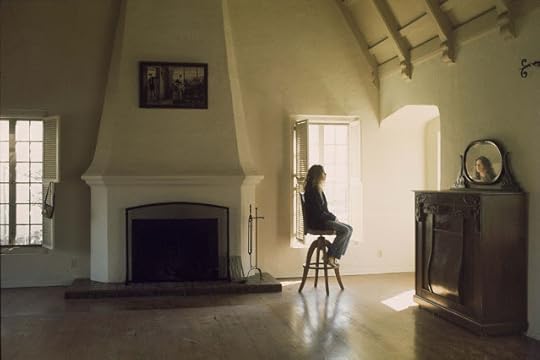
Goffin and King cranked out one classic hit after the other: "Will You Love Me Tomorrow" (recorded by the Shirelles, 1960), "Take Good Care of My Baby" (Bobby Vee, 1961), "Chains" (covered famously by the Beatles, in 1963), "The Loco-Motion" (first recorded in 1962 by Little Eva, who was Carole and Gerry's babysitter), "Go Away Little Girl" (Steve Lawrence, 1962); and "Don’t Bring Me Down" (recorded by The Animals in 1966). "The Loco-Motion" holds the distinction of being a No. 1 hit on three occasions, first by Little Eva, then by Grand Funk Railroad and last by Kylie Minogue.
 King’s debut solo LP, Writer (1970), though well-reviewed, was not a commercial success. Then came Tapestry. Recorded in January 1971 at A&M Recording Studios, seven of its 12 songs – including "So Far Away," "You've Got a Friend" and "I Feel the Earth Move" – were by King exclusively; three were by King and Goffin (including "A Natural Woman," of which Jerry Wexler was also a co-writer), and two songs with lyrics by Toni Stern, another Laurel Canyon compatriot.
King’s debut solo LP, Writer (1970), though well-reviewed, was not a commercial success. Then came Tapestry. Recorded in January 1971 at A&M Recording Studios, seven of its 12 songs – including "So Far Away," "You've Got a Friend" and "I Feel the Earth Move" – were by King exclusively; three were by King and Goffin (including "A Natural Woman," of which Jerry Wexler was also a co-writer), and two songs with lyrics by Toni Stern, another Laurel Canyon compatriot.
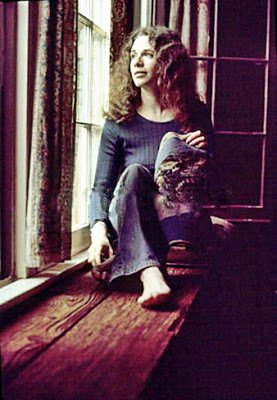 King provided keyboards and lead vocals with additional voices from Merry Clayton (The Stones' "Gimme Shelter"), Joni Mitchell and James Taylor, and backup musicians Danny Kortchmar, Russ Kunkel and bassist Charles Larkey (who became King's second husband, and father to two of her children). The album's cover showed King by the window of her home on Appian Way in the Hollywood Hills working on a needlepoint (a tapestry) with her cat Telemachus peering into the camera lens. There's some great trivia!Critical reception was enthusiastic. Rolling Stone's Jon Landau called Tapestry a work of "surpassing personal-intimacy and musical accomplishment," and it went on to become one of the biggest-selling albums of all time with a total of more than 40 million sold to date. In 2003, Tapestry was one of 50 recordings chosen by the National Recording Registry to be placed in the Library of Congress as part of America's sound recording heritage.Tapestry is a quiet, little LP that proves sometimes less is more - much more.
King provided keyboards and lead vocals with additional voices from Merry Clayton (The Stones' "Gimme Shelter"), Joni Mitchell and James Taylor, and backup musicians Danny Kortchmar, Russ Kunkel and bassist Charles Larkey (who became King's second husband, and father to two of her children). The album's cover showed King by the window of her home on Appian Way in the Hollywood Hills working on a needlepoint (a tapestry) with her cat Telemachus peering into the camera lens. There's some great trivia!Critical reception was enthusiastic. Rolling Stone's Jon Landau called Tapestry a work of "surpassing personal-intimacy and musical accomplishment," and it went on to become one of the biggest-selling albums of all time with a total of more than 40 million sold to date. In 2003, Tapestry was one of 50 recordings chosen by the National Recording Registry to be placed in the Library of Congress as part of America's sound recording heritage.Tapestry is a quiet, little LP that proves sometimes less is more - much more.
January 24, 2021
Carole King Weaves a Tapestry - 50 Years Ago
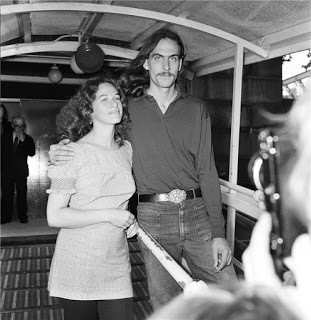 As a songwriter, Carole King, beside her husband and lyricist Gerry Goffin, penned many of the defining records of the 60s. With Carole on the piano in a small apartment adjacent to the legendary Brill Building, the team wrote hit after hit, from The Shirelles' "Will You Still Love Me Tomorrow" to Bobby Vee's "Take Good Care of my Baby." "The Loco-Motion" was recorded by the Goffin's babysitter, Little Eva. It would reach No. 1 on the charts, and then rise to the top once again with the Grand Funk Railroad version. Other hits include Herman's Hermits' "I'm Into Something Good," "Goin' Back" by Dusty Springfield, The Monkees' incomparable "Pleasant Valley Sunday," and "(You Make Me Feel Like) a Natural Woman" by Aretha Franklin. Even the Beatles took advantage of the couples' "Chains" on Please Please Me.By the end of the 1960s, composers like King and songwriting padawan Joni Mitchell knew the era of songwriters was waning, Instead, artists like Dylan and, later, The Beatles ushered in the "singer/songwriter." It was then that Carole and Gerry split and King headed to L.A., like the girls "coming to the canyon," prompted by James Taylor.
As a songwriter, Carole King, beside her husband and lyricist Gerry Goffin, penned many of the defining records of the 60s. With Carole on the piano in a small apartment adjacent to the legendary Brill Building, the team wrote hit after hit, from The Shirelles' "Will You Still Love Me Tomorrow" to Bobby Vee's "Take Good Care of my Baby." "The Loco-Motion" was recorded by the Goffin's babysitter, Little Eva. It would reach No. 1 on the charts, and then rise to the top once again with the Grand Funk Railroad version. Other hits include Herman's Hermits' "I'm Into Something Good," "Goin' Back" by Dusty Springfield, The Monkees' incomparable "Pleasant Valley Sunday," and "(You Make Me Feel Like) a Natural Woman" by Aretha Franklin. Even the Beatles took advantage of the couples' "Chains" on Please Please Me.By the end of the 1960s, composers like King and songwriting padawan Joni Mitchell knew the era of songwriters was waning, Instead, artists like Dylan and, later, The Beatles ushered in the "singer/songwriter." It was then that Carole and Gerry split and King headed to L.A., like the girls "coming to the canyon," prompted by James Taylor.
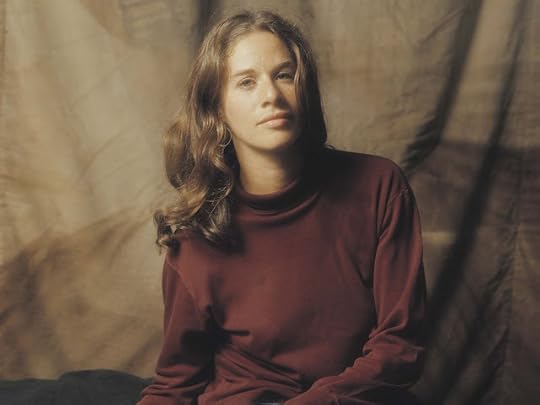
Carole's debut LP, Writer, was critically well-received but didn’t make a dent in the pop charts. Most notably, the LP featured "Up On the Roof" which Taylor would cover a few years later (it had already been a hit for The Drifters). Then, in February 1971, came Tapestry, the second-biggest seller of 1971 and '72. For several years, it was the best-selling album in the world. The LP's sparse production from Lou Adler and the personal way in which Carole related to her own songs garnered a raw and emotive vocal performance as fresh today as fifty years ago. Tapestry captured the soul of a generation and the attitude of the newly liberated woman in songs like "I Feel the Earth Move" and her subdued version of the Aretha hit "Natural Woman." Tapestry plays like a greatest hits LP with pop ballads "It's Too Late" and "So Far Away," and Carole's "cover" of her own song, "You've Got a Friend," that friend, James, took to the top of the charts.But let's backtrack a bit to a part you may not know: King pretty much retired to raise her two daughters after her breakup with a cheating husband before heading west to Laurel Canyon in 1967 where she joined progressive-folk band The City with future husband Charles Larkey on bass and Danny Kortchmar on guitar and vocals. With King's sultry vocals and piano, The City's sound was deep and soulful, imperfect but passionate. The LP, Now That Everythings Been Said, was a [very] minor hit and from it, the Monkees covered "A Man Without A Dream," Blood, Sweat and Tears had a hit with "Hi-De-Ho (That Old Sweet Roll)" and the Byrds would famously tackle "Wasn't Born To Follow," on the Easy Rider soundtrack."[We] expected it to zoom to the top of the charts within, at most, a few weeks. Individually and together, we optimistically imagined the album’s success as if it had already happened. Danny and Charlie kept telling each other, 'It’s a great album. The City’s gonna be number one with a bullet!'" It wasn't meant to be, and the LP was pulled from production, remaining that way at King’s request for more than 30 years. Few have ever heard of it. Tapestry, instead, released four years later, remains the 2nd longest-charting LP after Dark Side of the Moon. Often available in the $2 bin (because there were so many pressings), you'll be hard-pressed to find one in good condition – the LP was played to death, although one's collection is not complete without it.
January 23, 2021
What were they up to in 1970?
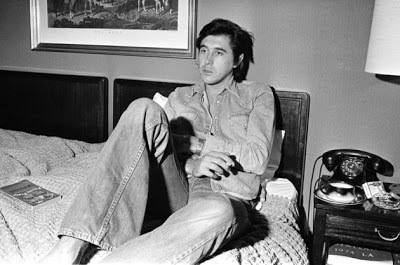 So many incredible bands and artists got their start in the late 60s and early 70s. 1969 saw the first LPs from Led Zeppelin, Badfinger, New Riders of the Purple Sage, Hall and Oates, Faces, Crazy Horse, King Crimson and Kraftwerk. 1970 saw the first recordings by Supertramp, Leon Russell, Emerson, Lake and Palmer, Stephen Stills, Sparks, and Black Sabbath. We don't have to dig too deeply to see where things were going. But how about those artists who weren't yet a blip on the horizon?
So many incredible bands and artists got their start in the late 60s and early 70s. 1969 saw the first LPs from Led Zeppelin, Badfinger, New Riders of the Purple Sage, Hall and Oates, Faces, Crazy Horse, King Crimson and Kraftwerk. 1970 saw the first recordings by Supertramp, Leon Russell, Emerson, Lake and Palmer, Stephen Stills, Sparks, and Black Sabbath. We don't have to dig too deeply to see where things were going. But how about those artists who weren't yet a blip on the horizon?In early 1970, Patti Smith was dating Robert Mapplethorpe, living in the Hotel Chelsea and writing and performing. She would often be seen with Mapplethorpe at CBGB's and at Max's Kansas City.
Bryan Ferry was performing occasionally, but, as many of us have to do, he was forced to work for a living. In Bryan's case, he was teaching pottery at the Holland Park School. He would form Roxy Music in November 1970.
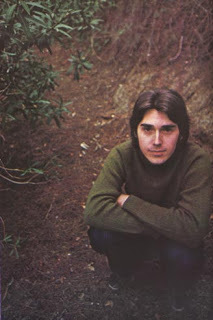 Stephen Morrissey was just a lad but he had already started a campaign of writing to Smash Hits and other British music magazines with his opinions. Some things don't change.
Stephen Morrissey was just a lad but he had already started a campaign of writing to Smash Hits and other British music magazines with his opinions. Some things don't change.Walter Becker and Donald Fagen met in 1967 and moved to Brooklyn in 1970 where they spent a year trying to sell their songs and themselves to the Brill Building set. It was Kenny Vance of Jay and the Americans who gave them a shot. They played with Jay and the Americans on tour for a hundred dollars per night. Other artists would start to perform their songs, such as Barbra Streisand, but it would be in 1970 that friend and associate of Kenny Vance, Gary Katz, would move to L.A. and hire Becker and Fagen as songwriters for ABC Records. Katz would go on to produce most of Steely Dan's LPs.
Glenn Frey of Long Branch Pennywhistle, alongside J.D. Souther met Don Henley in the spring of 1970. The relationship that would encompass Eagles (official name; not The Eagles) would last until 1980.
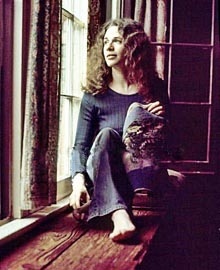 For his 1970 cult-classic, self-titled album, Emitt Rhodes recorded in a makeshift recording studio he set up at home in his bedroom. Rhodes taped the instruments on a four-track recorder.
For his 1970 cult-classic, self-titled album, Emitt Rhodes recorded in a makeshift recording studio he set up at home in his bedroom. Rhodes taped the instruments on a four-track recorder.Marvin Gaye was composing the compositions for this writer's number 1 soul/pop LP, What's Going On. Without it, there would be no Innervisions, no Superfly, it was that influential.
There was indeed a lot going on that is difficult to research but fun to speculate. Imagine, as we speak, 50 years ago, Carole King and Joni Mitchell sitting with their pianos (or Joni most likely her guitar) finishing up the tracks that would become Tapestry and Blue. Not hard to get that visual.
January 22, 2021
Joni and Graham and James (Carly, too) by Emily Bronte
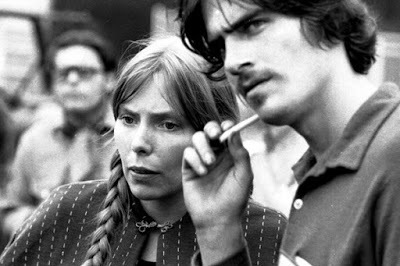 The etherealism of progressive rock is instantly apparent when one looks at those catalyst LPs like Days of Future Past, In the Court of the Crimson King or the debut from Emerson, Lake and Palmer. The Left Coast was instead interpolating the realism of the times. In that, we see the love relationships that intertwined around the Laurel Canyon set. One needs a scorecard. Let's see, Joni Mitchell was involved with Graham Nash ("Our House," "My Old Man," "Simple Man"), and when the couple split, Joni found herself in Crete writing her emotional masterpiece, Blue.
The etherealism of progressive rock is instantly apparent when one looks at those catalyst LPs like Days of Future Past, In the Court of the Crimson King or the debut from Emerson, Lake and Palmer. The Left Coast was instead interpolating the realism of the times. In that, we see the love relationships that intertwined around the Laurel Canyon set. One needs a scorecard. Let's see, Joni Mitchell was involved with Graham Nash ("Our House," "My Old Man," "Simple Man"), and when the couple split, Joni found herself in Crete writing her emotional masterpiece, Blue. 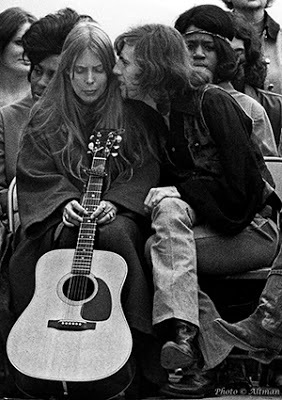 Of their relationship, Graham Nash said, "I first met Joan in Ottawa, Canada in 1967. The Hollies were playing a show there and Joni was playing at a local club. There was a party thrown for us after our show, and when I entered the room, I noticed a beautiful woman sitting down with what appeared to be a large Bible on her knees. I kept staring at her and our manager at the time, Robin Britten, was saying something into my ear and distracting me from my quest. I asked him to be quiet as I was checking Joni out. He said, 'If you’d just listen to me, I’m trying to tell you that she wants to meet you…' Joni and I hit it off immediately, and I ended up in her room at the Chateau Laurier and she beguiled me with 15 or so of the most incredible songs I’d ever heard. Obviously, I fell in love right there and then."
Of their relationship, Graham Nash said, "I first met Joan in Ottawa, Canada in 1967. The Hollies were playing a show there and Joni was playing at a local club. There was a party thrown for us after our show, and when I entered the room, I noticed a beautiful woman sitting down with what appeared to be a large Bible on her knees. I kept staring at her and our manager at the time, Robin Britten, was saying something into my ear and distracting me from my quest. I asked him to be quiet as I was checking Joni out. He said, 'If you’d just listen to me, I’m trying to tell you that she wants to meet you…' Joni and I hit it off immediately, and I ended up in her room at the Chateau Laurier and she beguiled me with 15 or so of the most incredible songs I’d ever heard. Obviously, I fell in love right there and then." It took two years before they met again. Graham moved to L.A. after meeting up with Crosby and Stills at Cass Elliot's, and there he again met Joni. Their new love was idyllic. The songwriters shared the piano in her living room to write songs like "Willy" (her nickname for Graham) and "Our House," an ode to a couple’s lazy summer day.
Graham recalls, "Joni’s grandmother had always wanted to be a creative person. But in those days, you had to be a wife and a mother.” He said that Joni “saw that as one of the downfalls of marriage… Somewhere in Joni's mind, she thought I would demand that of her. Which is completely false. How in the hell could anybody with a brain say to Joni Mitchell, 'Why don't you just cook?'"
Upon her return from Crete, Joni started seeing James Taylor. Their relationship would last six months (or a year if you listen to Taylor) and in that time the couple accentuated each others' work, their lyrics intertwining as Taylor played on Joni's recordings of "California," "All I Want" and "A Case of You," and Joni providing vocal backup for Mud Slide Slim.
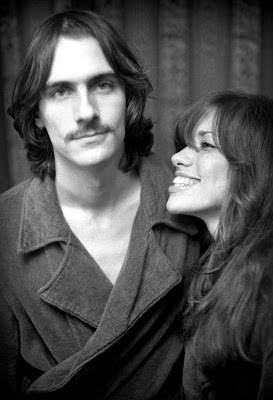 Like a game of chess, the players played off one another. James first met Carly Simon as a 14-year old (Carly was 18) on their families' summer vacations. But it wasn't until Carly opened for Cat Stevens at Doug Westin's Troubadour in 1971 that they met again as adults, their intermission flirtation interrupted by Mitchell. As the mythology goes, only weeks before walking down an avenue in NYC, Carly saw the cartoon cover of James on Time magazine. She blurted out for all those around who were listening, "I'm going to marry him." It's funny how much it sounds like a young girl's crush reading 16, maybe writing the name Carly Taylor in cursive in the margins of the magazine.
Like a game of chess, the players played off one another. James first met Carly Simon as a 14-year old (Carly was 18) on their families' summer vacations. But it wasn't until Carly opened for Cat Stevens at Doug Westin's Troubadour in 1971 that they met again as adults, their intermission flirtation interrupted by Mitchell. As the mythology goes, only weeks before walking down an avenue in NYC, Carly saw the cartoon cover of James on Time magazine. She blurted out for all those around who were listening, "I'm going to marry him." It's funny how much it sounds like a young girl's crush reading 16, maybe writing the name Carly Taylor in cursive in the margins of the magazine.In November that year, Carly was given tickets to James' performance at Carnegie Hall. During that night's intermission, Carly invited James to a home-cooked meal. "If ever you want a home-cooked meal while you're here in New York, I'd love to make lunch with you," she declared, to which he replied, "What about tonight?" The couple married in 1972, a union that would last until 1983. The disruption of Taylor's drug abuse would lead Carly to recall, "Our love became bipolar, switching from love to hate, lust to loathing, and back again, sometimes within a day."
Taylor would ultimately lament: "You could fall in love, but if one of the people is addicted, it's not going to work. The whole person is simply not available," he explained.

